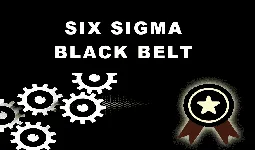The Ultimate Guide to Lean Manufacturing
-
 By Niharika Chaurasia
By Niharika Chaurasia - Published on Jan 5 2024

Table of Contents
- Introduction to Lean Manufacturing
- Mastering the Core Principles of Lean Manufacturing
- In-Depth Exploration of Lean Manufacturing Approach
- Objectives of Lean Manufacturing
- Key Components of Lean Manufacturing Strategy
- Lean Manufacturing Tools for Operational Mastery
- Benefits of Adopting Lean Manufacturing
- Strategic Implementation of Lean Manufacturing Principles
- Analyzing Pros and Cons of Lean Manufacturing
- How Sprintzeal can accelerate Your lean journey
- Conclusion
- FAQ
Introduction to Lean Manufacturing
What is Lean Manufacturing? It's not just a set of tools; it's a game-changer for businesses seeking efficiency and excellence. Lean Manufacturing, a powerhouse in the world of production, has revolutionized how businesses operate. Originating from the Toyota Production System, it has become a cornerstone for numerous successful companies.
Did you know that Toyota, a pioneer in Lean practices, achieved a remarkable 50% reduction in assembly time and slashed overall production costs by 60% over the past decade? These impressive facts showcase the transformative impact of Lean Manufacturing.
Lean Manufacturing is like a superhero for businesses – it's all about making things super-efficient and awesome. In our blog titled "Introduction to Lean Manufacturing," we'll delve into the basics of this transformative approach.
As we explore the tricks and tools of Lean Manufacturing, you'll discover why it's this amazing approach to making things better and smarter. Get ready for a journey into efficiency!
Mastering the Core Principles of Lean Manufacturing
Lean Manufacturing works on a set of core principles that are like the basis of its efficiency-driven philosophy. It's really important for any organization that wants to make its operations smoother and increase productivity to understand and get good at these principles. Let's take a closer look at them:
Customer Value
Lean Manufacturing is all about making things that the customer really values. Every step in making a product or service should contribute to making something the customer needs and likes.
Value Stream Mapping
This one's about understanding and making better the series of steps that turn raw materials into the final product the customer gets. By getting rid of unnecessary steps and making processes better, organizations can work more efficiently.
Continuous Improvement (Kaizen)
Here's the deal with Kaizen – it's all about always making things a little bit better. It's like saying, "Hey, let's keep finding small ways to improve." Everyone in the organization can share ideas for making things better, creating a culture of always getting a bit better.
Excited to learn more about these superhero principles? Check out the complete guide on the core principles of Lean Manufacturing. It'll show you how these principles can turn ordinary businesses into exceptional ones.
In-Depth Exploration of Lean Manufacturing Approach
Lean Manufacturing is all about getting the most value while wasting as little as possible. This means using principles that totally change how organizations do things.
At its core, Lean approaches are all about committing to getting the most value while wasting as little as possible. This commitment drives the use of principles that reshape how organizations work. These principles, like really focusing on what the customer values, always looking to improve a bit (Kaizen), and respecting people a lot, are the foundation of Lean Manufacturing approaches.
To make things work better, Lean Manufacturing uses specific tools. There's the Kanban System to see how work is going, the 5S System to keep workspaces organized, Value Stream Mapping to find and fix problems, and Just-In-Time (JIT) strategies to have just enough inventory to meet customer needs. When organizations use Lean approaches, it's like magic – they see benefits like getting things done faster, better quality, and saving a lot of money.
Numbers tell us that Lean Manufacturing works – companies say they're 20% faster in making things within the first year, customers are 30% happier, and waste can be cut by up to 50% in some industries.
As you learn more about the details of Lean Manufacturing approaches, our complete guide is ready for your curiosity. It's filled with real-world examples and case studies. Dive into our blog on Lean Manufacturing Approaches and discover how this strategy can totally transform your organization.
Objectives of Lean Manufacturing
In the manufacturing world, the goals of Lean Manufacturing aren't just big ideas; they're super important strategies that show real results. Recent numbers tell us that when organizations start using Lean principles, they see a really cool 15-20% boost in how well things work within the first year.
And that's not all – Lean strategies to cut down on waste can save up to 30% in costs, making a big difference in the money part.
Maximizing Customer Value
Lean Manufacturing puts a lot of focus on understanding exactly what the customer wants and making sure to give them the most value. When organizations follow these customer-focused Lean practices, customers end up 20% happier, and they stick around longer.
Eliminating Waste
The main goal of Lean is to get rid of waste in all parts of making things – like having too much stuff in storage or doing unnecessary steps. And guess what? Organizations that follow Lean can cut their costs by up to 30% by reducing waste.
Continuous Improvement
Lean Manufacturing is all about getting better and better. It creates a culture where everyone is always looking for ways to make things smoother. This commitment to always getting better can cut how long it takes to make something by 25%.
Enhancing Quality
Quality is super important in Lean Manufacturing. It's all about getting rid of mistakes and making things run smoothly. When organizations follow Lean principles, they see a big 15-20% increase in how well things work in the first year, all because of better quality.
As we explore the goals of Lean Manufacturing, it's not just talk – we're diving into real-world stuff! We'll show you how these goals work in actual situations and the cool tools that make it all happen.
Our complete guide on the Objectives of Lean Manufacturing is your backstage pass to understanding it all. It's not just reading; it's an adventure that matches your curiosity.
Key Components of Lean Manufacturing Strategy

Creating a successful Lean Manufacturing strategy means putting together key pieces that match the principles of efficiency, waste reduction, and continuous improvement. Let's break down the important elements that build a strong Lean Manufacturing strategy:
Clear Definition of Value:
Every effective Lean strategy starts by understanding what the customer values. Knowing this helps align production processes and cut out unnecessary steps, reducing waste.
Emphasis on Continuous Improvement:
A big part of Lean Manufacturing is always getting better. A good strategy encourages small, ongoing improvements at every level. Companies doing this see about a 10% improvement in productivity every year.
Cross-Functional Collaboration:
Breaking down walls between different departments is a must. A Lean strategy brings everyone together, making things work smoothly. This approach cuts lead times by about 25% on average.
Just-In-Time (JIT) Production:
Doing things just when they're needed, thanks to JIT, reduces inventory and lead times. Companies using JIT save a lot on extra inventory costs.
Visual Management Systems:
Tools like the Kanban system, showing workflows visually, are super important in Lean Manufacturing. Using these tools improves workflow efficiency by around 15%.
As you think about how important these pieces are, there's a lot more to explore. Our complete guide on Lean Manufacturing Strategy is waiting for you. It's not just reading; it's an adventure that matches your curiosity. Dive into our blog and discover the full power of Lean Manufacturing strategies for your organization.
Lean Manufacturing Tools for Operational Mastery

Did you know that when companies use Lean Manufacturing tools, they often see incredible improvements in how well they operate? Let's check out the game-changing tools that have brought about big improvements in productivity, safety, and overall performance in different industries.
Kanban System:
It's not just a tool; it's like a superhero for getting things done. Companies using Kanban have seen a whopping 15% boost in overall productivity. How? By making workflows smoother and managing tasks better.
5S System:
The 5S System is more than just keeping things organized; it's a big deal for safety too. Industries following the 5S principles have noticed a cool 20% drop in work-related accidents. This proves that having a well-organized workspace keeps everyone safer.
Value Stream Mapping:
This tool leads to real results. Companies using Value Stream Mapping have seen a cool 25% decrease in how long it takes to make things. It's all about finding and fixing problems to make things work better.
Just-In-Time (JIT):
Just-In-Time isn't just a concept; it gets real results. Companies using JIT principles have cut their inventory by a big 40%. This shows that making things just when they're needed saves a ton of money.
Poka-Yoke:
It's not just about avoiding mistakes; it's about making products better. Companies using Poka-Yoke techniques have seen a nice 30% drop in defects. This proves that error-proofing makes products excellent.
As you dig into the numbers, there's a lot more to discover in our complete guide on Lean Manufacturing Tools. Dive into our blog and find out how Lean Manufacturing tools can unlock the full potential for your organization. Let's simplify your operational journey together!
Benefits of Adopting Lean Manufacturing

Entering the world of Lean Manufacturing isn't just a shift in strategy; it's a journey that brings numerous advantages to your organization. Let's explore the straightforward benefits of adopting Lean principles.
Operational Harmony
Lean Manufacturing is all about doing things smarter. By cutting out unnecessary steps and optimizing processes, your operations become more efficient. This leads to quicker production cycles, smoother workflows, and an overall more responsive system.
Smart Savings
Lean principles are a cost-saver's dream. By identifying and removing unnecessary expenses, your organization can significantly reduce production costs. This not only means more savings but also contributes to a healthier bottom line.
People-Powered
Lean principles value every team member. By involving employees in decisions and fostering a culture of improvement, you boost morale and engagement. Happier employees often bring innovative ideas and take pride in their work.
Quality on Point
Quality is a top priority in Lean Manufacturing. By simplifying processes and reducing errors, your products reach a higher standard. This not only satisfies customers but also saves costs associated with fixing mistakes.
Customer Satisfaction
Lean Manufacturing ensures products are made just in time to meet customer demand. This not only reduces inventory costs but also enhances customer satisfaction by delivering products when needed.
Strategic Implementation of Lean Manufacturing Principles

Getting on the Lean Manufacturing journey requires more than just understanding principles; it demands a strategic approach to implementation. Let's explore how organizations strategically integrate Lean principles into their operations for sustainable success.
Mapping the Lean Blueprint
Implementing Lean Manufacturing begins with a well-crafted plan. Organizations need to map out their current processes, identify areas for improvement, and set clear goals. This blueprint serves as a guide throughout the implementation journey.
Building a Lean Culture
A successful Lean implementation relies on a cultural shift. It starts at the top with leadership embracing Lean principles and filters down to every team member. Creating a culture of continuous improvement and accountability is crucial for long-term success.
Training and Empowering Teams
Implementing Lean principles requires an empowered workforce. Training programs ensure that employees understand Lean concepts and can actively contribute to process improvements. This empowerment fosters a sense of ownership and engagement.
Continuous Monitoring and Adaptation
Lean is not a one-time fix; it's a continuous journey. Implementing Lean principles involves setting up monitoring mechanisms to track progress and adapt strategies as needed. Regular feedback loops ensure that the organization stays on course toward operational excellence.
Breaking Down Silos
Encourage cross-functional collaboration by breaking down departmental silos. This ensures that Lean improvements benefit the entire organization and enhance the overall value stream.
Celebrating Small Wins
Acknowledge and celebrate small wins. Recognizing incremental improvements builds momentum, reinforcing the value of Lean principles and inspiring lasting change.
Measuring Success
Set clear Key Performance Indicators (KPIs) to measure success. Whether it's improved lead times, reduced defects, or overall cost savings, these metrics provide tangible evidence of Lean impact.
To delve even deeper into the transformative power of Lean principles, explore our comprehensive guide on Strategic Implementation of Lean Manufacturing.
Analyzing Pros and Cons of Lean Manufacturing
Pros of Lean Manufacturing
- Improved Efficiency:
Lean principles make things smoother, cutting waste and making work better.
- Saving Money:
Finding and getting rid of unnecessary steps means spending less money, making the organization financially healthier.
- Better Quality:
Lean strategies work on making things with fewer mistakes, giving better product quality and making customers happier.
- Happy Employees:
When everyone helps make things better all the time, it makes a nice workplace where people are happy and think of new ideas.
- Happy Customers:
Doing Lean things, like making things just when they're needed, means customers get what they want on time, making them really happy.
Cons of Lean Manufacturing
- Cost at the Start:
Starting with Lean ideas might need money for training and changes in how things are done.
- Not Liking Change:
People might not like changing the way they work for Lean to work well.
- Takes Time:
Getting really good at Lean is a slow process, needing patience and not giving up.
- Too Focused on Saving Money:
Just thinking about saving money might stop new ideas and making the organization grow.
- Not for Everyone:
Lean might not work for all businesses or industries, so not everyone can use it the same way.
In Lean Manufacturing, there are good things (pros) that help a lot, but there are also some things to be careful about (cons). It's like finding the best way to do things that fits the organization.
How Sprintzeal can accelerate Your lean journey
Sprintzeal is here to help you become really good at operations. As a well-known training group worldwide, we focus on giving you excellent Lean Six Sigma courses designed to improve your skills and make things work better. How Sprintzeal Helps You:
Great Teachers:
Learn from experts who have worked in the industry.
Fun Learning:
Our courses are interesting, with things you can do to practice what you learn.
Choices for Learning:
You can pick learning with a teacher or go at your own pace.
Learning What Matters:
We teach you the best ways to do things, keeping up with what's new.
Sprintzeal Lean Six Sigma Courses:
If you're just starting, this course is for you. It teaches the basics of Lean Six Sigma, making processes better and reducing waste.
For people who want to lead making things better, this course goes deeper into Lean Six Sigma. You learn how to look at data, find problems, and make lasting solutions.
If you're experienced or a leader, this advanced course teaches you to handle big projects, guide others, and make important improvements in the organization.
Sign up now and start making a real difference in your organization with Sprintzeal's Lean Six Sigma Courses. Begin your journey to be really good at operations today!
Conclusion
As we finish exploring Lean Manufacturing and how it changes things, keep in mind that the road to being really good at operations is always changing. From learning about Lean ideas to using them smartly, each step helps make the organization work better, spend less, and make better products.
The good and not-so-good parts give us important things to think about, reminding us to be smart when using Lean. It's like walking through a place where there are good things and some things to watch out for.
When you set out on your Lean journey, think of Sprintzeal as your trusted companion. Their tailored courses not only teach you a lot but also show you how to put those lessons into action. It's like having a reliable partner to guide you as you strive to improve how things work.
FAQ
Q: What is the main goal of Lean Manufacturing?
The main goal is to make operations work better by getting rid of waste and making processes smarter.
Q: Can Lean ideas work in all businesses?
While they can fit in many places, Lean might not be right for every business, and how well it works depends on the kind of business.
Q: How can Lean Six Sigma help my organization?
Lean Six Sigma is like using the best parts of Lean and Six Sigma together to make things work better and have fewer mistakes.
Q: How is Lean Six Sigma different from Lean Manufacturing?
Lean Six Sigma is a mix of Lean ideas and math-based methods to make processes better in two ways.
Q: What are the main ideas in Lean Manufacturing?
Main ideas include making less waste, making processes better, and making operations work smoother.
Subscribe to our Newsletters
Popular Programs
Trending Posts
A Supply Chain Management Guide to Mastering Logistics End to End
Last updated on Nov 13 2023
Secret to Unlock Organizational Excellence: Stages of Continuous Improvement
Last updated on Nov 27 2023
Operational Planning Creation, Key Elements and its Benefits
Last updated on Feb 21 2025
Best Six Sigma Books in 2024
Last updated on Apr 26 2023
Total Quality Management (TQM) vs. Six Sigma
Last updated on Oct 10 2024
A Deep Dive into Lean Continuous Improvement Tools
Last updated on Dec 26 2023
Categories
- Agile Management 54
- AI and Machine Learning 42
- Big Data 53
- Business Management 51
- Cloud Computing 44
- Digital Marketing 56
- Information Security 8
- IT Hardware and Networking 17
- IT Security 103
- IT Service Management 29
- Leadership and Management 1
- Microsoft Program 2
- Other 43
- Programming Language 31
- Project Management 162
- Quality Management 75
- Risk Management 8
- Workplace Skill Building 2
Trending Now
Top Career benefits of Lean Six Sigma Green Belt
ArticleLean methodology, Six Sigma methodology and Lean Six Sigma Explained
ArticleSix Sigma Black Belt Certification – Value and Career Benefits in 2024
ArticlePareto Chart in Six Sigma - Explained
ArticleQuality Management Interview Questions 2024
ArticleSix Sigma Certification Guide - A Professional's Guide
ArticleSix Sigma Yellow Belt Certification - Six Sigma for Beginners
ArticleQuality Control Explained – Six Sigma
ArticleTotal Quality Management - A Complete Guide for Beginners
ArticleQuality Assurance in Six Sigma Explained
ArticleQuality Assurance vs Quality Control
ArticleSix Sigma Certification – Everything you Need to Know About Getting Certified
ArticleLean Six Sigma on Resume for Rewarding Career Benefits
ArticleQuality Manager Interview Questions and Answers for 2025
ebookService Delivery Manager Interview Questions and Answers (With Examples)
ArticleSix Sigma Interview Questions and Answers 2024
ArticleHow to become a Quality Analyst
ArticleA Supply Chain Management Guide to Mastering Logistics End to End
ArticleSenior Quality Manager Interview Questions and Answers 2024
ArticleTop 30 Quality Analyst Interview Questions and Answers 2025
ArticleFinancial Analyst Interview Questions and Answers 2024
ArticleRisk Manager Interview Questions and Answers 2024
ArticleCompliance Manager Interview Questions and Answers 2024
ArticleOperation Manager Interview Questions and Answers
Article5 Lean Continuous Improvement Principles to Supercharge Your Operations
ArticleHow to Become a Quality Manager - Career, Job Scope and Certifications
ArticleEssential Components of a Quality Management System
ArticleSix Sigma Certifications - Reasons Why you Should Get Them
ArticleTop Qualities of a Good Manager and a Leader
ArticleLearn about Statistical Process Control (SPC) and its top applications
ArticleCost of Poor Quality - A Detailed Guide
ArticleImplementing 5S Methodology for Better Work Efficiency
ArticleWhat Is Lean Management?
ArticleBest Six Sigma Books in 2024
ArticleLeadership vs Management - The Ultimate Guide
ArticleQuality Assurance Plan - Six Steps To Quality Assurance Plan
ArticleOperational Planning Creation, Key Elements and its Benefits
ArticleA Complete Guide to Product Life Cycle Stages 2025
ArticleSix Sigma tools for DMAIC Phases
ArticleWhat Is Lean Manufacturing?- An Overview
ArticleThe Lean Continuous Improvement Model: A Comprehensive Guide
ArticleDMAIC vs. DMADV: Key Differences and Choosing the Right Six Sigma Methodology
ArticleA Deep Dive into the Power of Lean Continuous Improvement Process
ArticleLean Continuous Improvement Methods for Business Excellence
ArticleIntroduction to Lean Manufacturing- Definitions, Framework, and More
ArticleUnderstanding the Key Principles of Lean Manufacturing
ArticleSecret to Unlock Organizational Excellence: Stages of Continuous Improvement
ArticleLean Continuous Improvement: A Detailed Guide to Mastering Organizational Quality
ArticleLean Waste Management: The Ultimate Guide 2023
ArticleA Deep Dive into Lean Continuous Improvement Tools
Article8 Wastes of Lean - Strategies for Identification and Elimination
ArticleUnderstanding Lean Manufacturing's Pros and Cons
ArticleLean Waste Reduction Strategies: Boost Efficiency and Cut Costs
ArticleTop 10 Lean Manufacturing Tools for Optimal Productivity
ArticleBeyond the Basics: Benefits of Lean Continuous Improvement
ArticleWhat are Quality Standards? | A Guide to ISO Standards
Article7 Important Types of Quality Management System
ArticleA Comprehensive Guide to Quality Management Systems
ArticleISO 9001 Standard: Benefits and Certification
ArticleBenefits of QMS Certification for Your Business
ArticleStep-by-Step Implementation Guide to ISO 9001
ArticleThe Ultimate Guide to ISO 9001: Boosting Quality and Certification Success
ArticleQuality Management System – QSM Approaches and Methodologies
ArticleHow to Effectively Implement a Robust Quality Management System?
ArticleExplaining QMS Documentation Structure: Benefits and Best Practices
ArticleWho Needs ISO 9001 Certification and Why?
ArticleKey Elements of ISO 9001:2015 Quality Management System
ArticleOvercoming Common Challenges in ISO 9001 Certification: Tips and Best Practices
ArticleBest Quality Management Tools
ArticleTotal Quality Management (TQM) vs. Six Sigma
ArticleQuality Manager Salary: What Freshers & Experts Earn in 2025
ArticleCertified Scrum Product Owner: Job Roles And Responsibilities
ArticleTips for Continuous Integration Testing: Streamlining QA
Article10 Quality Management Strategies Adopted by Top Managers
Article


















